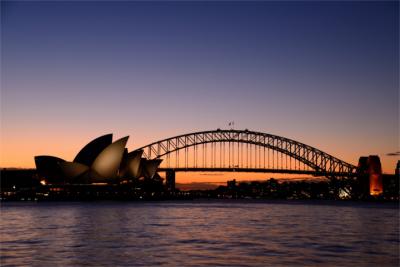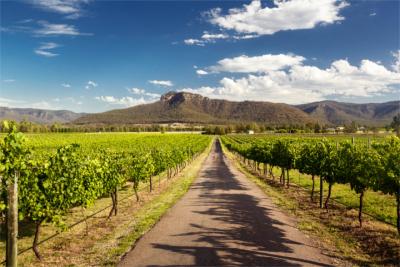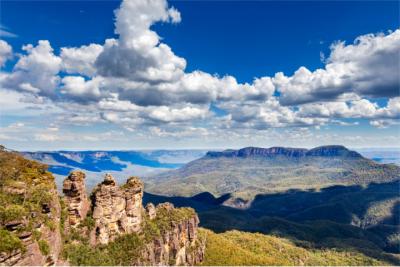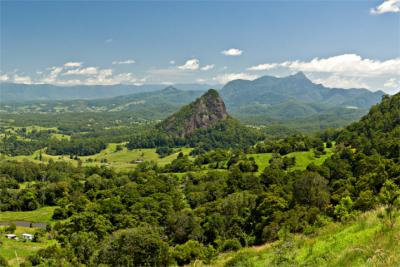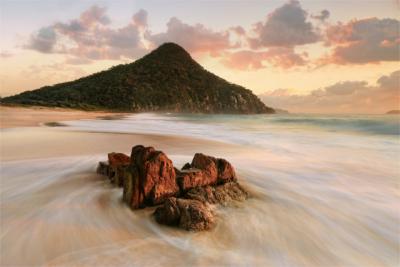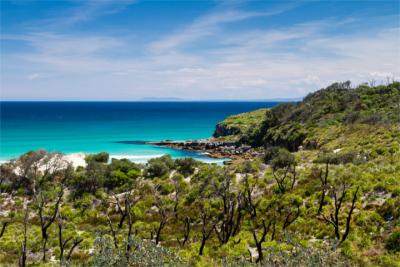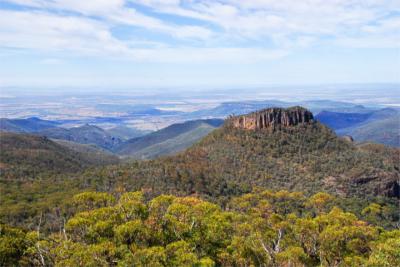Travel Offers
Travelmyne Featureprint
Distance
Blue Mountains - Australia's Blue Wonder
The World Natural Heritage site of the Blue Mountains is one of the most frequently visited nature reserves in Australia. The breathtaking sandstone plateau fascinates travellers with its impressive rock formations, thick eucalyptus forests and its characteristic blue shimmer.

Geography - An impressive sandstone plateau
The Blue Mountains are a mountain range in the Australian state of New South Wales about 60 kilometres north-west of Sydney. The sandstone plateau is part of the Great Dividing Range, about 1,000 metres high and extends in north-south direction for almost 300 kilometres. Several rivers such as the Coxs River have their source in the Blue Mountains, which owe their name to the blue mist of the eucalyptus plants. The biggest city and tourist centre is Katoomba. The temperate climate in the hills of the range creates mild summers and cool winter months.

Nature - A unique flora on 10.000 km²
The fantastic landscape in the Blue Mountains displays extraordinary natural beauty with impressive gorges, giant canyons, spectacular rocks, thick eucalyptus forests, high waterfalls and raging rivers. The mountains' landmark is the rock formation of the Three Sisters near Katoomba in the Blue Mountains National Park. This national park as well as six others (e.g. Kanangra Boyd National Park, Gardens of Stone National Park, Yengo National Park) and the Jenolan Caves, one of the world's oldest cave systems, were declared UNESCO World Natural Heritage sites in 2000. Reasons for this decision are the numerous eucalyptus and endemic plants such as the Wollemi Pine. The latter was long considered to have gone extinct and was rediscovered in the Wollemi National Park in 1994. Other members of the region's flora are tree ferns, mosses, acacias, orchids and wild flowers. The fauna in the Blue Mountains consists of kangaroos, wallabies, koalas, wombats, martens, platypus, dingos and countless bird species.

Culture - Legends and cultural sights of the aborigines
The European settlement of the Blue Mountains began in the 19th century with the construction of the first road and expeditions by Gregory Blaxland, William Wentworth and William Lawson. However, aboriginal tribes such as the Darug and the Gundungurra already lived in the area over 14,000 years ago. The culture and traditions of the native inhabitants are still present in the form of ceremonial sites, stone tolls, age-old legends and several rock paintings, for example in the Red Hands Cave. Travellers can see artefacts and listen to myths like that of the formation of the Three Sisters in the Muru Mittigar Aboriginal Culture Centre or on a guided tour through the region. In this cultural centre, you also gain an insight into the art of the aborigines. You can watch artists paint, produce weapons or play the didgeridoo.

Experience - Experiencing Scenic World against a wonderful mountain backdrop
The Blue Mountains are a breathtaking natural region, which visitors can experience in the Scenic World, for example. Several railways run past the highlights of the World Natural Heritage site and impress with all kinds of special features. The cable track of the Scenic Skyway has a glass floor, which offers a stunning panoramic view and shows the range's landmarks in the perfect light. A ride on the Scenic Railway, which is one of the steepest mountain railways on earth (45° incline), is another extraordinary experience because it takes you through the rainforest and into the gorge of the Jamison Valley. You see even more of the region on the viewing platform Echo Point, the Giant Stairway, the Scenic Walk or during a ride on the Zig Zag Railway. Holidaymakers should also not miss out on attractive coastal towns such as Katoomba and Leura with their charming shops and galleries, fashionable cafes and numerous restaurants.

Activities - Hiking in a World Natural Heritage site
The Blue Mountains are the ideal holiday destination for hikers. Over 140 kilometres of hiking trails offer excellent conditions for light walks to demanding hikes which last several days. On your way, you pass small streams, breathtaking gorges, impressive waterfalls, steep cliffs and thick forests. That is why such walks do not only appeal to hikers but also to adventurers and lovers of nature. Cyclists pursue their hobby on the mountain biking trails. While canoeists and kayakers can be active on one of the many waterways, swimmers, boaters and anglers will enjoy the region's numerous lakes. In addition, the impressive mountain panorama with its unique rock faces and extraordinary cave systems is ideally suited for climbing and caving. Visitors who prefer exploring the mountain range by car can go along the Greater Blue Mountains Drive, which offers 18 discovery routes.

Information
The best time for travelling the Blue Mountains are spring, summer and autumn. Tourists from abroad arrive at the international airport in Sydney and continue their journey towards Katoomba in a rental car, by train or by bus.
Active holidaymakers' hearts will leap for joy on a trip to the Blue Mountains in Australia. The spectacular natural landscape offers many opportunities for unique hikes, exciting climbing tours and adventurous cycling trips, while artistic towns provide cultural entertainment.

